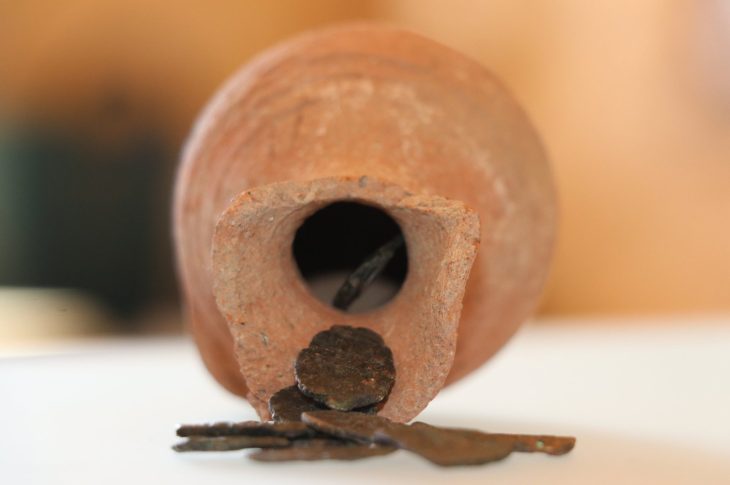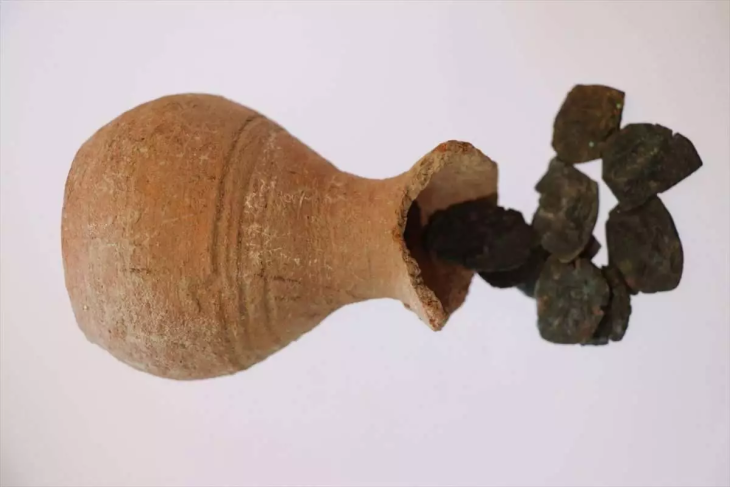Archaeologists in Türkiye have unearthed a fascinating glimpse into daily life at the ancient city of Hadrianopolis. While excavating at the site in Eskipazar, Karabük province, the team led by Dr. Ersin Çelikbaş from Karabük University (KBÜ) stumbled upon a collection of 10 coins hidden within what appears to be a rudimentary piggy bank.
Hadrianopolis, nicknamed the “Black Sea’s Zeugma” for its mosaic treasures depicting various animals, has been under excavation since 2003. The ongoing project has yielded significant discoveries, including churches adorned with mosaics, defensive structures, villas, and theaters.
The latest dig focused on a specific building whose exact purpose remains a mystery. “Based on the artifacts we found – various vessels and kitchen utensils – we believe it might have served as a kitchen,” explains Dr. Çelikbaş. “Stratigraphy, the layering of archaeological deposits, shows the building was used for a long period, but details about its final phase are unclear.”

However, within this area, a remarkable find emerged – a hidden cache of 10 coins dating back to the reign of Emperor Constans II (641-666 AD). This discovery suggests the building’s final period of use coincided with the 7th century.
While these coins could be considered a treasure trove in archaeological terms, Dr. Çelikbaş proposes a different interpretation. “We suspect these coins weren’t hidden for safekeeping, but rather served as a form of early piggy bank, perhaps used by a woman residing there.”
The discovery of these coins offers a unique window into the final days of the building’s use. It sheds light on everyday life in ancient Hadrianopolis, highlighting the potential of archaeological finds to illuminate the domestic practices of past societies.
The article also provides a brief historical background on Hadrianopolis, a city inhabited from the 1st century BC to the 8th century AD. Founded during the Hellenistic period and named after the Roman emperor Hadrian, the city flourished during the Roman and Byzantine eras. Interestingly, when Emperor Theodosius I merged the regions of Paphlagonia and Bithynia into the province of Honorias, Hadrianopolis became known as Hadrianopolis in Honorias. Its Christian heritage secured its place on the list of titular sees, even today.
This discovery at Hadrianopolis serves as a reminder that the stories of the past are not confined to grand monuments and historical figures. Everyday objects, like a simple piggy bank, can offer just as much insight into the lives of ordinary people who inhabited these ancient cities.
